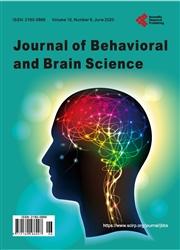Comparison of Spatio-Spectral Properties of Zen-Meditation and Resting EEG Based on Unsupervised Learning
引用次数: 1
Abstract
This paper reports distinct spatio-spectral properties of Zen-meditation EEG (electroencephalograph), compared with resting EEG, by implementing unsupervised machine learning scheme in clustering the brain mappings of centroid frequency (BMFc). Zen practitioners simultaneously concentrate on the third ventricle, hypothalamus and corpora quadrigemina touniversalize all brain neurons to construct a detached brain and gradually change the normal brain traits, leading to the process of brain-neuroplasticity. During such tri-aperture concentration, EEG exhibits prominent diffuse high-frequency oscillations. Unsupervised self-organizing map (SOM), clusters the dataset of quantitative EEG by matching the input feature vector Fc and the output cluster center through the SOM network weights. Input dataset contains brain mappings of 30 centroid frequencies extracted from CWT (continuous wavelet transform) coefficients. According to SOM clustering results, resting EEG is dominated by global low-frequency (14.4 Hz); whereas Zen-meditation EEG exhibits globally high-frequency (>16 Hz) activities throughout the entire record. Beta waves with a wide range of frequencies are often associated with active concentration. Nonetheless, clinic report discloses that benzodiazepines, medication treatment for anxiety, insomnia and panic attacks to relieve mind/body stress, often induce beta buzz. We may hypothesize that Zen-meditation practitioners attain the unique state of mindfulness concentration under optimal body-mind relaxation.基于无监督学习的禅定与静息脑电空间频谱特性比较
本文通过实现无监督机器学习方案对质心频率(BMFc)的大脑映射进行聚类,报告了禅宗冥想脑电图(EEG)与静息脑电图相比具有不同的空间频谱特性。禅宗修行者同时专注于第三脑室、下丘脑和四核体,将所有大脑神经元进行整合,构建一个分离的大脑,并逐渐改变正常的大脑特征,从而导致大脑神经可塑性的过程。在这种三孔集中期间,EEG表现出显著的弥散高频振荡。无监督自组织映射(SOM)通过SOM网络权重匹配输入特征向量Fc和输出聚类中心,对定量EEG数据集进行聚类。输入数据集包含从CWT(连续小波变换)系数中提取的30个质心频率的大脑映射。根据SOM聚类结果,静息脑电图以全局低频(14.4Hz)为主;而禅宗冥想脑电图在整个记录中表现出全局高频(>16Hz)活动。具有宽频率范围的β波通常与活性浓度有关。尽管如此,临床报告披露,苯二氮卓类药物,一种治疗焦虑、失眠和恐慌发作以缓解身心压力的药物,经常会引起β-嗡嗡声。我们可以假设禅修者在最佳身心放松下达到了独特的正念专注状态。
本文章由计算机程序翻译,如有差异,请以英文原文为准。
求助全文
约1分钟内获得全文
求助全文

 求助内容:
求助内容: 应助结果提醒方式:
应助结果提醒方式:


